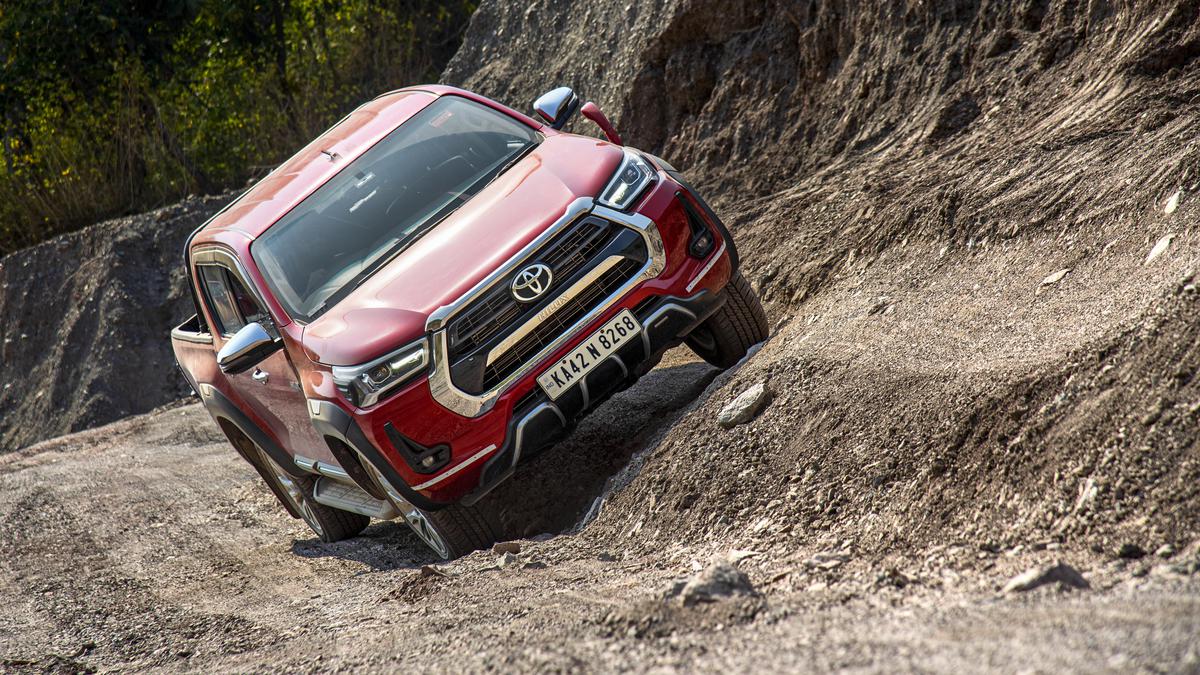
Dissecting Toyota Hilux and its offroading qualities
The Hindu
Dissecting Toyota Hilux and its offroading qualities
Widely regarded as the toughest off-roader in the world, Toyota’s Hilux is nothing less than an icon. Universally respected for its solid construction, indestructible nature, and the fact that many will still be around long after we have left, it is a legend in its own right. “Tested and respected,” the Hilux is nothing less than the automotive equivalent of an AK47 — both effective and unbreakable at the same time.
Having put the Hilux through its paces in our cities and highways, we are aware what the ride feels like. But what is it like to drive out in the wild, on a real off-road trail? On a rough terrain that needs a 4X4 does it differ from its sister SUV the Fortuner?
Though both are built on the IMV platform and the Hilux shares its chassis with the already tough-as-nails Fortuner, it is also different and considerably more robust. This is especially true of the ladder-frame chassis. The longitudinal rails are larger and wider, the longer rear section is built more robustly and for added strength and bending stiffness, the chassis also gets more stout cross members.
When it comes to off-roading, the Hilux is built on a longer 3,085mm wheelbase, as against 2,745mm for the Fortuner, and this along with the additional rear overhang, reduces its effectiveness off-road. So while the approach angle is a 29 degrees (good off-roaders have around 30), the departure is now 26 degrees. These clearance angles, and the fact that it has no lockable front diff, means the Toyota should manage climbs, rock crawling and general off-roading pretty easily.
Where the Hilux has an advantage off-road is the ‘live’ rear axle and leaf-sprung suspension. This combo allows for better axle articulation during more demanding angles, and what helps is that it gets an electronic limited slip differential at the rear, low range and a rear diff lock. In addition, there is the hill-descent control and VSC or electronic stability control.
Our opportunities to test the Hilux off the road were limited to a custom-made set of courses. Still the experience was sufficient to show us just how indestructible it feels off-road.
The first off-road test for the Hilux is a steep ascent on some broken ghat roads with plenty of sand and gravel on some of the steeper inclines. We got a chance to see how well the rear manages, especially as there is no weight over the driven wheels. While the size of the truck is apparent on the tighter sections, what is impressive is that the traction control cutting in does not cause a break in the momentum. The 500Nm of torque from the engine makes climbing up feel effortless, and the Hilux’s 204hp diesel just burbles away at around 2,000rpm, but remember this pick-up weighs around 2.3 tonnes.

The crowning achievement of American inventor William Painter’s career was, well, inventing the now-ubiquitous crown bottle cap. Oh, and not to forget, the bottle cap lifter to open these crowns, or what we simply call the bottle openers. A.S.Ganesh tells you how Painter changed the bottling industry forever…










